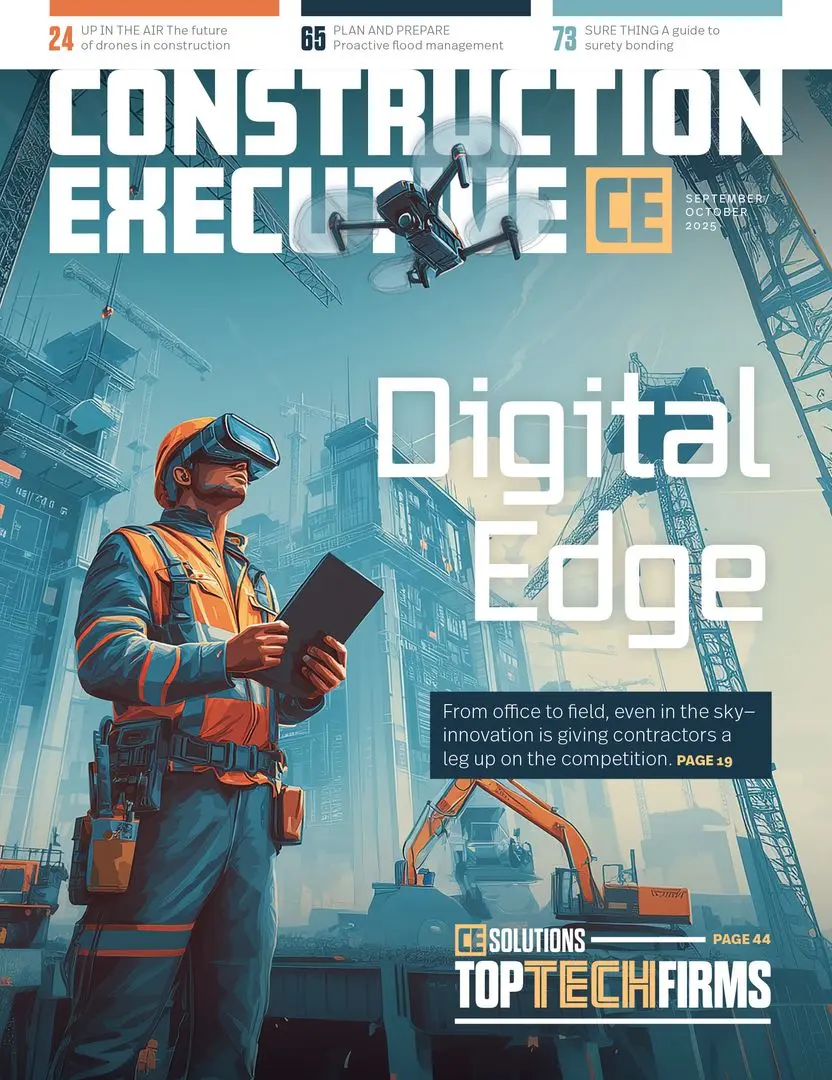When Sue Kuchler sits around the dinner table with her family, she likes to share interesting observations from the commercial construction projects she inspects as a safety services consultant for Sentry Insurance.
“I have equated my job to the TV show ‘How It’s Made,’” Kuchler says. “I’m just fascinated by some of the things I see, so I come home and at least once or twice a week we’ll be eating dinner and I’ll be telling my kids about something I saw that day.”
Had she pursued her initial interest in college, those dinner conversations would have gone much differently.
HELPING PEOPLE WAS ALWAYS HER GOAL
Initially, Kuchler envisioned becoming a high school guidance counselor. Sitting through a social welfare class, however, at the University of Wisconsin–Whitewater in the early 1990s, she quickly realized it was not the fit for her.
Wanting to still study at the university and choose a career in which she could help people, Kuchler searched for something else. She read about occupational safety, a relatively new program in the early 1990s, and found it interesting. Kuchler was one of just four women enrolled in the program at that time. She went on to earn a bachelor of science in a field that even today consists of just 18% women, according to the U.S. Bureau of Labor Statistics.
To make an impact in a field comprised mostly of men, Kuchler says she often has had to work a bit harder than her male counterparts to earn needed credibility. But she knew decades ago that would be the case and wasn’t deterred. “I mean, there probably were easier routes for me to go,” she says. “But the field just really interested me, and I felt I could make a difference.”
EMBRACING THE CONSTRUCTION CHALLENGE
For much of her career, Kuchler has collaborated with employers in manufacturing markets. During inspections, she evaluates risks and controls and offers safety recommendations—delivering those onsite and also in follow-up letters. She also provides safety training as requested.
Five years ago, Kuchler joined Sentry, a mutual insurer based in Stevens Point, Wisconsin, that serves a variety of businesses and industries. There, she continued to work in industrial settings until 2022, when she chose to join a growing business segment at Sentry that serves more than 1,400 contractors.
While she enjoyed helping manufacturers keep their workplaces safe, the switch to construction brought a welcome challenge—learning how contractors and their myriad of workers can operate more safely in the beehive of ever-changing jobsites.
“I was really interested in that challenge because construction is such a diverse market with different exposures,” Kuchler says. “In one day, I might see two or three different specialized contractors. Identifying what they’re doing and what their risks are is something I had to learn pretty quickly.”
She described a scene from an early site visit that made an impression on her. She watched as a worker dug a narrow trench with an excavator below power lines and next to buildings with passers-by.
“Just the level of respect you have to have for these trade workers,” Kuchler says. “Here they are performing their jobs around heavy equipment, other people, and often at crazy heights. You realize how aware and smart they have to be with everything they’re doing, because nothing ever goes 100% smoothly on a construction site. And then you’ve got nature to deal with.”
Kuchler performs jobsite safety inspections in parts of Wisconsin, Upper Michigan, and Illinois. Weather brings added elements of risk that she had not experienced in the controlled industrial settings she was accustomed to.
COLLABORATION INCREASES SAFETY
Men comprise nearly 90% of the construction industry’s workforce, according to BLS data. Despite getting the occasional odd look, Kuchler says her primary challenge when she steps foot on a jobsite is to ease any angst contractors and their workers may have when a safety inspector shows up. Her strategy is to build a rapport through conversation that leads to mutual respect and agreement on what can be done to better protect workers.
“My tactic is to ask a lot of questions to get a better understanding of what they’re doing,” Kuchler says, “versus coming in like an expert who knows everything, because I don’t.
“So, it’s talking with the jobsite manager to gain an understanding of why they’re doing something a certain way and then perhaps offering a way to do it better or discuss what the code says.”
Kuchler likens her presence on a jobsite to a fresh set of eyes. She may notice a risk that workers walk by 100 times a day and don’t think twice about. Or a violation of an OSHA standard that could lead to a fine if an OSHA inspector were to visit the jobsite.
Kuchler says she gains knowledge on every jobsite—especially from builders and contractors who are best in class. She also learns from other people’s mistakes, reading about the claims Sentry sees, and often asks investigators for more details and an explanation of what went wrong.
She takes that knowledge and shares it “with somebody who maybe could use a little improvement. Eventually, they begin to realize I do have a little bit of knowledge to share.”
More than a little.
Kuchler is an OSHA 500 authorized construction trainer. And she sits on ABC of Wisconsin’s Safety Committee, where she regularly discusses industry best practices and issues with builders and contractors, industry leaders and occupational safety experts.
In her experience, safety boils down to one question: how much is safety engrained in the day-to-day culture of an organization, and how much safety knowledge do workers have at all levels?
WOMEN, THE UNTAPPED WORKFORCE
There are currently nearly 12 million people employed in the construction industry, according to BLS data. And while women comprise just 10.8% of that workforce, that’s an all-time high, says ABC of Wisconsin.
Still, that leaves room for growth, especially in an industry that sees high turnover despite being a sector where workers report the highest levels of happiness, according to a CNBC report. And while women comprise 47% of the country’s overall workforce, just 1.7% of women in the workforce are in construction, according to the BLS.
That said, “I’ve seen over the years more and more women getting involved in occupational safety,” Kuchler says. “Sentry, too, has done a great job of hiring more women as safety consultants.”
‘THE MOST INTERESTING JOB’
Looking back, Kuchler’s fulfilled by her career choice. A good day may consist of identifying just one or two things that help prevent an injury or accident. While she occasionally churns over an issue in her mind when she’s at home, she mostly sees the positives.
Talking with her mom recently, Kuchler said she shared some observations from work. Her mom commented that, despite having four other children in the workforce, “‘You have the most interesting job.’”
What would Kuchler say to someone considering following in her footsteps?
“I’d highly recommend it.”







